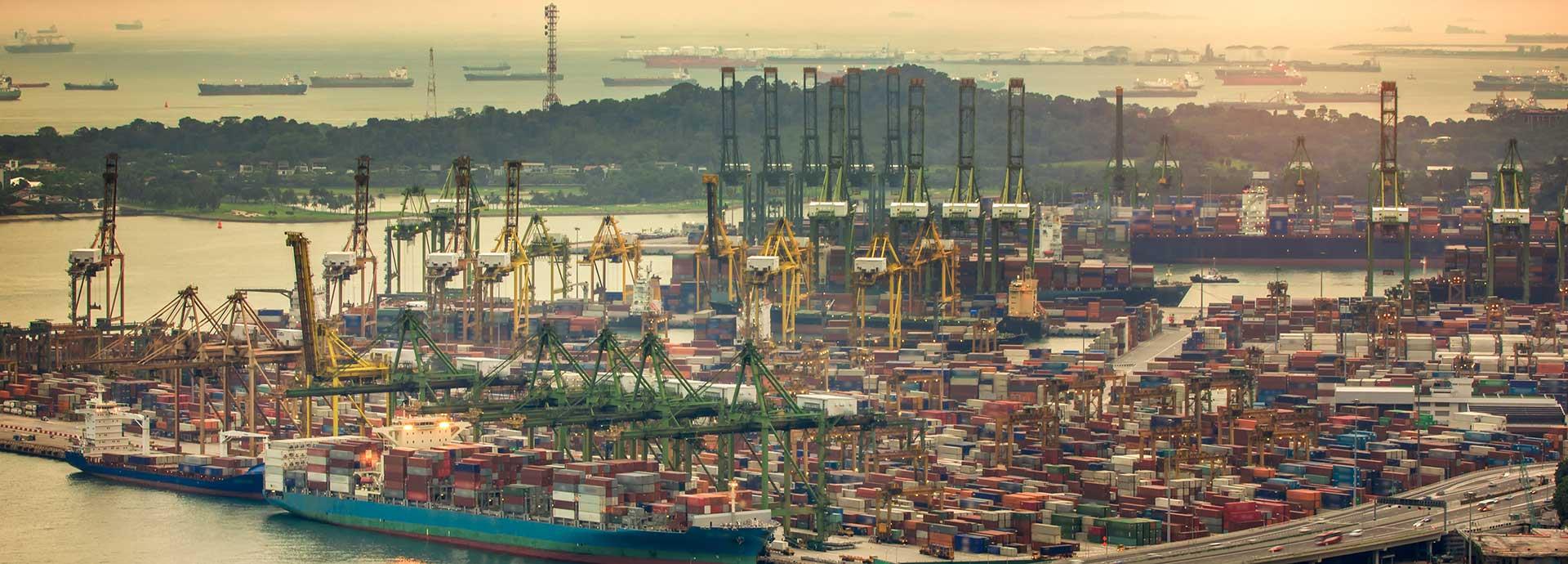

The Southeast Asian country, Singapore, made a long-term commitment, in the 1970s, to invest in the modernisation and upgradation of its maritime and port infrastructure. These investments, combined with the country’s strategic location on the Strait of Malacca, skilled workforce and high service levels, have paid-off. Singapore is today the world’s largest transhipment hub, handling about one-fifth of the global container transhipment and offering connectivity to 600 ports in 200 countries. For Singapore’s export-driven economy, with one of the highest trade-to-GDP ratios in the world, the importance of its ports cannot be understated.
Dominance challenged
The winds of change, however, are blowing through the region. Andrew Tan, Chief Executive of Singapore’s Maritime and Port Authority (MPA) believes there’s no guarantee that Singapore’s ports will remain competitive in the future. In a report in the Straits Times, Credit Suisse economist Michael Wan stated that “… to say that Singapore will always be a pre-eminent logistics and sea hub is probably a bit of wishful thinking.”
The challenges include the large-scale development of ports and transhipment corridors by other countries in the neighbourhood, structural changes in the maritime industry, new shipping routes opened-up by global warming and ever-increasing vessel capacities that need ever-expanding port facilities.
Responding to challenges
The MPA, a statutory body under the Ministry of Transport, and the port operators of Singapore are, however, aware of these challenges and are responding with long-term vision and strategic changes. The Next Generation Port (NGP) 2030 initiative is one such response. It is envisioned to allow Singapore’s ports to “utilise a new generation of technologies to increase efficiency and productivity, intensify land-use in the port, improve safety and security and raise the level of sustainability.”
A major component of the NGP 2030 is the next generation Tuas Terminal, Tan says. The terminal will open in four phases starting from 2021 and will ultimately have a 65 million TEU’s (Twenty-foot Equivalent Units) capacity, making it the single largest container terminal in the world.
Another massive infrastructure project has been the development of the Pasir Panjang Terminal’s Phases three and four. When fully operational, the project will have 6000 metres of quay length and up to 18 metres’ draft, according to a press release from PSA Singapore.
Long-term vision and strategic changes
In the midst of these expansion programmes, a special focus has been on leveraging the latest technological innovations to make Singapore’s ports more efficient, cost-effective and environment-friendly.
The Tuas terminal, for example, will deploy advanced port technologies and will have numerous automated systems. In the works are Automated Guided Vehicles (AGVs), automated yard and quay cranes and an Automated Storage and Retrieval System for containers to increase the yard storage capacity and create a mega intelligent container terminal, Tan reports.
Singapore’s Ministry of Transport (MoT) is working with PSA Corporation to design and develop an autonomous truck platooning system that will help meet the increasing demand for container truck haulage between different port terminals, according to PSA Singapore press releases.
As a part of NGP 2030, Singapore’s ports are embracing digitisation. Business Times reports that the Tuas Terminal in particular will use Big Data and Predictive Analytics capabilities to manage data and share reports on oceanographic and meteorological conditions, maritime traffic and cargo flow, material and machinery performance and even passengers’ and seafarers’ information. Built-in algorithms detect anomalies in vessel traffic patterns and contribute to safer operations.
Singapore faces challenges that other ports may not, in the form of land and sea space constraints. To overcome these challenges, the new projects are not restricted to traditional port layouts. At the Tuas Terminal for instance, new land-use concepts such as developing a platform above part of the container port that can be used as freight stations, logistics hubs and other port business activities are on the cards. The space under mega container terminals could be developed to store high-value goods.
The use of green and renewable energy in port operations is a high priority. The NGP 2030 brings local universities into the fold to identify and implement opportunities for using renewable energy. Apart from using hybrid-fuel and electric vehicles, PSA Singapore has partnered with the Japanese company Solar Frontier to install ultralight and bendable CIS thin-film solar energy modules at port terminals, starting with Pasir Panjang Terminal three.
“The use of clean energy, especially LNG as a ship fuel, will be a key development in the NGP 2030 to develop Singapore into the LNG bunkering hub,” says Tan. To spearhead this, the MPA has already implemented several initiatives, such as funding the development of LNG-fuelled vessels and developing an end-to-end LNG Bunkering supply solution.
One of the main drivers of Singapore’s maritime success over the years has been its skilled workforce and the MPA has initiated plans to ensure a steady supply of skilled workforce in the future. As a part of a nationwide skills-training initiative called SkillsFuture, the MPA has collaborated with Singapore Polytechnic and participating maritime companies to give fresh graduates from local polytechnics a head-start in the maritime business through Earn and Learn Programs.
“Make Singapore truly exceptional”
From once being a fabled and historic port-of-call and entrepôt, Singapore has transformed itself into a robust economy and a dominant logistics and sea hub through a bold vision and the meticulous execution of carefully-crafted plans. “The challenges we face today and in the years ahead are no less compelling than those we have met and overcome now and in the past. The NGP 2030 initiative … will provide opportunities for the next generation … to prove themselves and make Singapore truly exceptional,” Tan concludes.
Did you like this? Subscribe to Insights updates!
Once every six weeks, you will get the top picks – the latest and the greatest pieces – from this Insights channel by email.

